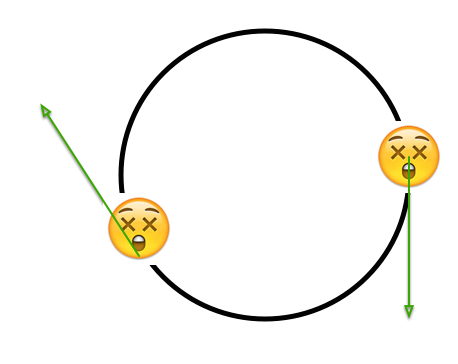Uniform Circular Motion

A particle is moving on a circular track with constant non-zero speed. Which of the following options are correct?
(a) The acceleration of the particle is zero.
(b) The rate of change of speed equals the magnitude of the rate of change of velocity.
(c) Instantaneous speed equals the magnitude of instantaneous velocity.
(d) The angle between velocity and acceleration has to be .
This section requires Javascript.
You are seeing this because something didn't load right. We suggest you, (a) try
refreshing the page, (b) enabling javascript if it is disabled on your browser and,
finally, (c)
loading the
non-javascript version of this page
. We're sorry about the hassle.
a) False. The particle is traveling in a circular path, implying that it has a non-zero centripetal acceleration. b) False. It is mentioned that the particle is traveling at a constant speed and so there is no rate of change. In contrast, the magnitude of the velocity's rate of change equates to the centripetal acceleration's magnitude (which must be greater than zero). c) True. While the velocity's direction is changing, its magnitude is defined as the particle's speed. d) True. The acceleration is center-seeking (along the radius) but the velocity will be at a tangent to the circumference of the path. The angle between tangents and radii is 90 degrees. (Feedback appreciated)